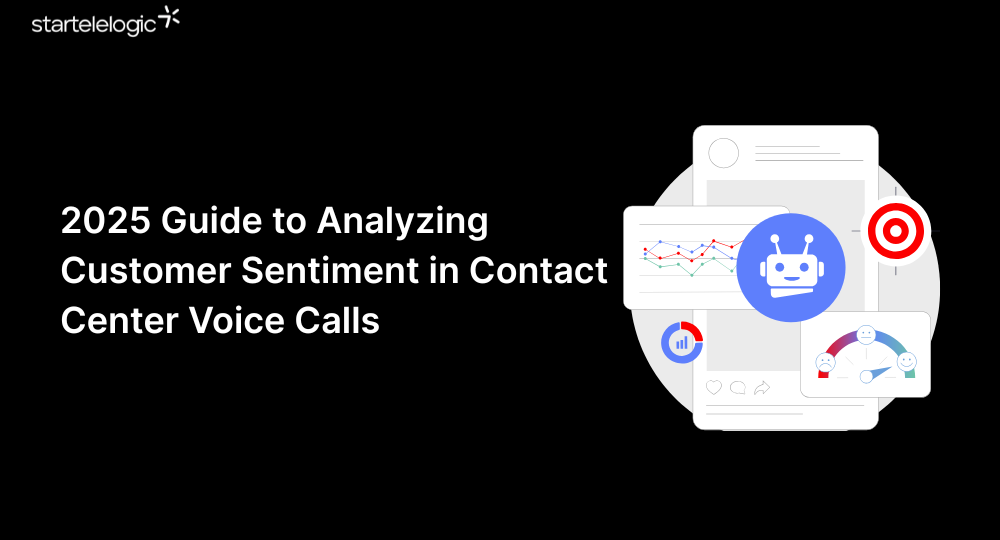In today’s hyper-competitive customer experience landscape, businesses must do more than solve problems—they must understand how customers feel during every interaction. That’s why Customer Sentiment Analysis Contact Center solutions have become essential tools for modern customer service teams.
This guide explores how to analyze customer sentiment in voice calls, how to implement it effectively, and what tools and strategies drive real results in contact centers in 2025.
What Is Customer Sentiment Analysis?
Customer sentiment analysis is the use of AI-powered tools to interpret the emotional tone of customer communications—whether written or spoken. In voice calls, this means assessing vocal cues, language, pitch, tone, pacing, and even silence to understand the caller’s mood and emotional intent.
Where traditional call analytics focuses on words and keywords, Customer Sentiment Analysis Contact Center systems add emotional intelligence. They help organizations detect frustration, confusion, satisfaction, or excitement—even when customers don’t express it directly.
There are generally three sentiment categories:
- Positive: Calm tone, gratitude, agreement
- Neutral: Informational, transactional tone
- Negative: Elevated pitch, aggressive language, silence, or abrupt hang-ups
Advanced tools further break these down into specific emotional tags like frustrated, confused, delighted, or angry—giving a fuller picture of each interaction.
Why Sentiment Analysis Matters in Contact Centers
Contact centers are often the first—and sometimes last—point of direct customer interaction. Each voice call contains a goldmine of emotional and behavioral data that reveals customer loyalty, intent, or dissatisfaction—if you know how to read it.
Here’s why Customer Sentiment Analysis Contact Center solutions are essential:
- Proactive Issue Resolution: Supervisors can identify at-risk calls or accounts in real time and intervene before issues escalate.
- Improved First-Call Resolution (FCR): Agents who recognize emotional cues can adjust their approach and solve problems faster.
- Better NPS and CSAT: Emotional data helps teams optimize customer experiences and improve overall satisfaction scores.
- Fewer Escalations: Intelligent routing based on sentiment prevents unnecessary handoffs.
- Empowered Agents: Sentiment analytics used for coaching builds agent confidence, morale, and skills.
In 2025, sentiment is just as important a metric as AHT, resolution time, or call volume. Forward-thinking companies are already using Customer Sentiment Analysis Contact Center software to drive CX strategy.
How Sentiment Analysis Works in Voice Calls
Effective Customer Sentiment Analysis Contact Center platforms combine several technologies to decode human emotion during live and recorded voice interactions.
Step-by-Step Process:
- Speech-to-Text Transcription
Calls are transcribed with high accuracy and timestamps. - Natural Language Processing (NLP)
NLP algorithms analyze vocabulary, structure, and meaning to detect emotional language. - Acoustic Signal Analysis
The system examines tone, pitch, pauses, and speech speed to identify emotional states. - Sentiment Scoring and Emotional Tagging
Each call or segment receives a sentiment score and emotional label—positive, negative, or neutral. - Visualization and Dashboards
Supervisors and QA teams monitor sentiment metrics via dashboards, real-time alerts, or CRM integrations.
Modern tools break conversations into distinct phases (greeting, problem, resolution) and score each segment. This granular insight helps track how customer sentiment changes throughout the call.
Benefits of Customer Sentiment Analysis Contact Center Solutions
The value of these systems goes well beyond simple call labeling—they directly improve operations and customer outcomes.
1. Live Agent Support and Alerts
Supervisors receive real-time sentiment alerts during live calls, allowing them to assist or escalate when needed.
2. Dynamic Call Routing
IVRs and routing engines use sentiment tags to direct sensitive calls to skilled agents or managers.
3. Targeted Coaching and QA
Rather than reviewing random calls, managers focus on interactions flagged by Customer Sentiment Analysis Contact Center tools as emotionally intense or risky.
4. Voice of the Customer (VoC) Insights
Sentiment data reveals macro trends in customer satisfaction, product issues, and service pain points—helping you adapt quickly.
5. Cross-Departmental Benefits
Sales, product, and marketing teams use sentiment insights to improve messaging, refine offerings, and inform product roadmaps.
Use Cases for Sentiment Analysis in 2025
Businesses across all sectors are leveraging Customer Sentiment Analysis Contact Center platforms:
- Banking & Finance: Detect emotional stress in fraud or dispute calls.
- Retail & E-commerce: Spot unhappy post-purchase customers and initiate recovery campaigns.
- Healthcare: Monitor empathy levels and improve patient-provider engagement.
- Telecom & Utilities: Identify frustration before service cancellations happen.
- Technology Providers: Use sentiment patterns to uncover upsell opportunities and reduce churn.
How to Implement Sentiment Analysis in Your Contact Center
Here’s a roadmap for deploying Customer Sentiment Analysis Contact Center solutions effectively:
1. Choose the Right Platform
Select software that excels in voice sentiment detection, supports real-time feedback, and integrates with your telephony and CRM stack. Top options in 2025 include NICE CXone, Verint, Talkdesk AI, and Amazon Contact Lens.
2. Integrate with Your Infrastructure
Make sure your PBX, SIP trunk, or cloud telephony setup streams audio or transcripts into the sentiment engine. Work closely with IT and compliance teams to handle data securely.
3. Define Goals and Metrics
Establish KPIs tied to sentiment such as:
- Sentiment-adjusted CSAT
- Resolution rate by sentiment trend
- Percentage of negative sentiment escalations avoided
4. Train and Empower Your Teams
Teach agents and supervisors how to read sentiment dashboards, respond to emotional cues, and improve conversational tone.
5. Continuously Optimize
Improve the system by:
- Updating custom vocabularies
- Reviewing flagged calls
- Fine-tuning routing rules
- Comparing sentiment data with NPS and survey feedback
Challenges and Considerations
While Customer Sentiment Analysis Contact Center solutions are powerful, there are a few considerations to keep in mind:
- Accent and Language Accuracy: Some models may struggle with dialects, low audio quality, or mixed-language interactions.
- Privacy and Consent: Always ensure you comply with GDPR, CCPA, or HIPAA when analyzing voice calls.
- Agent Trust: Use sentiment analysis to support, not punish, your agents. Transparent use builds buy-in.
The Future of Customer Sentiment Analysis Contact Center Technology
By 2030, sentiment analytics will evolve beyond post-call analysis. Expect developments such as:
- AI agents that shift tone based on caller mood in real time
- Predictive sentiment scoring linked to churn and upsell opportunities
- Cross-channel emotional profiling from chat, email, and voice
- Live sentiment coaching bots that offer agents whisper guidance
The future of customer experience will be emotionally intelligent—and your contact center will lead the way.
Conclusion
Customer Sentiment Analysis Contact Center platforms have become mission-critical in 2025. They help companies go beyond problem-solving and deliver emotionally resonant customer experiences.
Organizations that embrace this technology can:
- Resolve issues faster
- Prevent churn proactively
- Empower agents with real-time emotional insight
- Uncover hidden CX trends across the business
As customer expectations continue to evolve, emotional intelligence at scale becomes the next major frontier in contact center operations.
Is your contact center equipped to listen—and understand?




